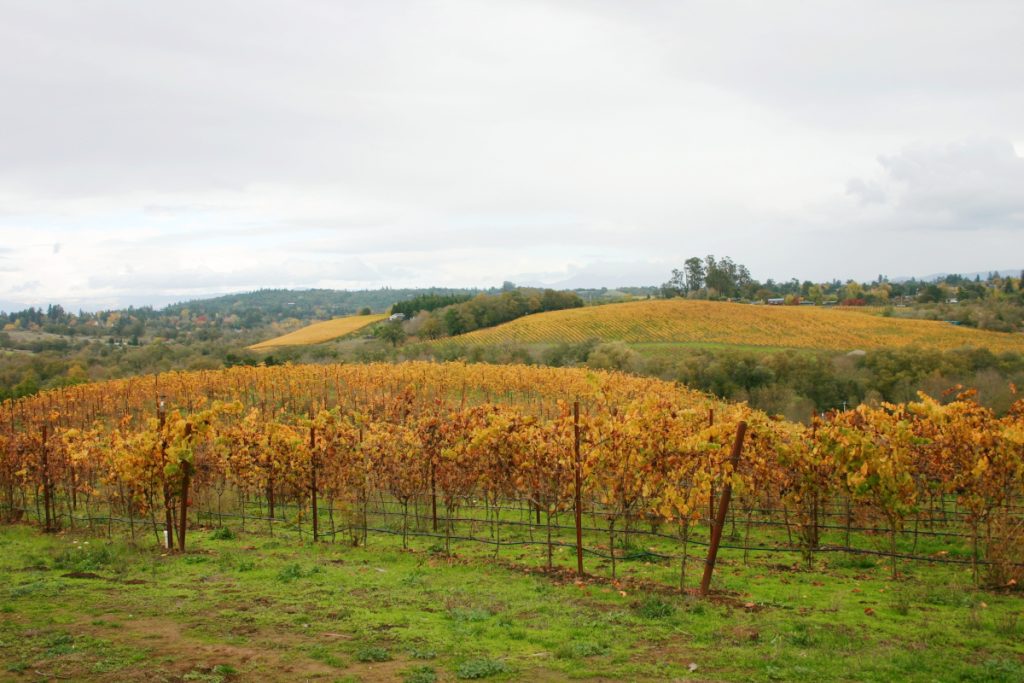And Other Tidbits About Sparkling Wine
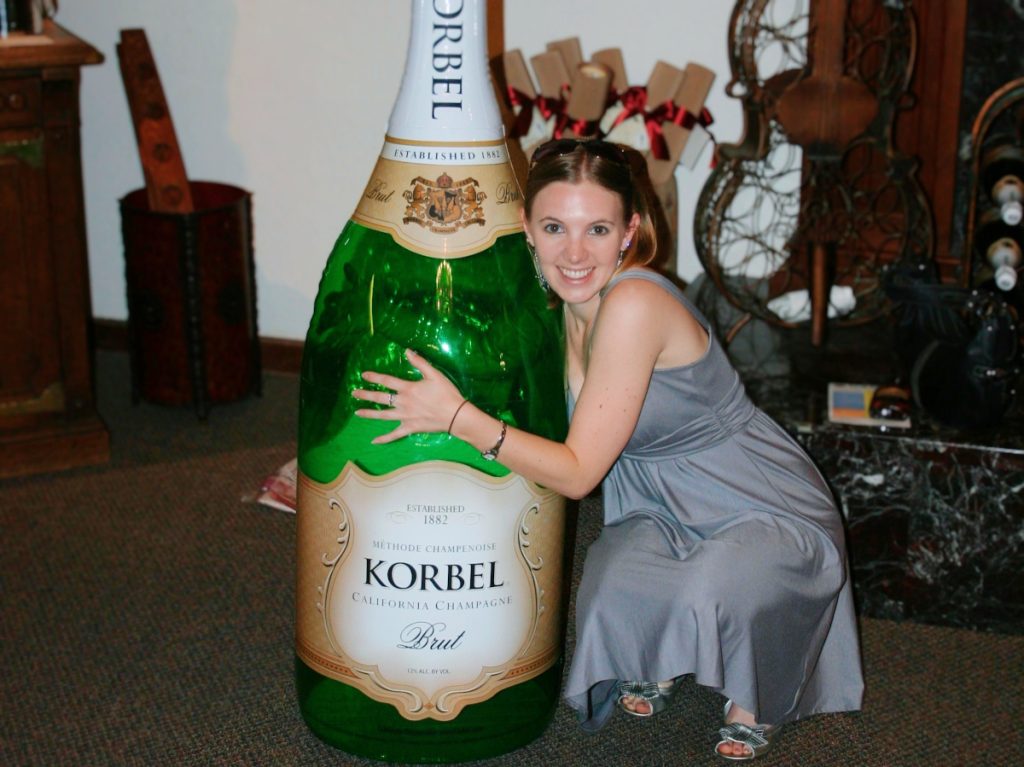
Photo by: Denise M. Gardner
On the forefront, sparkling wines may seem somewhat dull.
Pick a bottle.
Pop it open. (Actually, don’t pop it open. If you hear a loud “pop” when you open the bottle, you’re opening it wrong…)
Pour and sip.
Ahhh.
Some may even argue there’s very little difference among sparkling wines.
And many American consumers tend to lean towards sweet sparkling wine options, steering them away from the plethora of dry sparkling wine options, including Champagne.
That’s why our debut “Taste Wine with a Pro” virtual tasting event is featuring sparkling wine! I’m here to show you just how much variety there is in sparkling wines. Plus, true to traditional Champagne advertising, I’ll show you the opportunities that await to enjoy sparkling wines besides the obvious New
Year’s Eve celebrations.
There’s SO much we can talk about with sparkling wine: from its vast history to its portrayal in cinema, to the diversity of cocktails one can create from this wine. Let me tell you a little bit more about this wine style.
A Quick Tip on Sparkling Wine Labels
Unlike many wines, sparkling wines usually allude to the sweetness level of the wine in the bottle using specific language affiliated with sweetness levels for sparkling wine. A large majority of sparkling wines are labeled “Brut.” Essentially, if you see the term “Brut” on a label, you can expect the wine to taste dry (no sweetness).
Another common term that you’ll see in the U.S. is “Extra Dry,” which is a confusing term for many consumers. “Extra Dy” sparkling wine is actually sweeter than “Brut” sparkling wine. I know it’s weird. It’s even more confusing when you consider there is also an “Extra Brut” classification. However, “Extra Brut” is drier (less sweet) than Brut wines. I realize that it makes no sense, but if you can remember Brut equals “not sweet” and “Dry” equals semi-sweet, you’ll be able to decipher most of the sparkling wines that sit on wine shelves.
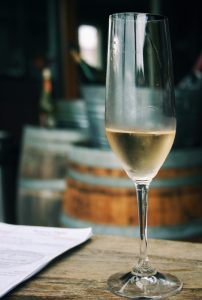
Photo by: Denise M. Gardner
While “Extra Dry” is somewhat sweet, many American sparkling wines that are sweeter than the “Extra Dry” allocation are simply labeled as “Sweet.”
Plus, many flavored sparkling wines (e.g., Strawberry Moscato, Strawberry Bubbly) or Moscato, in general, are sweet. Thus, if you see the term “Moscato,” you can almost always assume the wine is sweet. The sweetness affiliated with this variety is based on how Moscato is produced as a sparkling wine product.
The Secret to the Bubbles…
The other unique thing about sparkling wine is how the bubbles, or the carbonation, are produced while the wine is created.
The term “sparkling wine” is internationally defined, which means that terminology relating to sparkling wine production cannot go on a label unless certain processes were used to make that wine. The key to sparkling wine production is that the bubbles are created by a yeast-driven fermentation and then captured and held in the wine during that fermentation process.
This means that any wine product in which carbon dioxide is injected or added to a wine without the use of a fermentation cannot get labeled as “sparkling.”
In the case of alcoholic fermentation, the fermentation process utilizes sugar, producing alcohol and carbon dioxide. The carbon dioxide, under the right production conditions, is absorbed and held in the wine creating carbonation. Utilizing these special production techniques allows us to produce this bubbly wine!
Many of you probably notice taste differences in sparkling wine production between Méthode Champenoise / Champagne (Traditional Method) sparkling wines and Prosecco (Charmat Method, Cuve Close Method) sparkling wines.
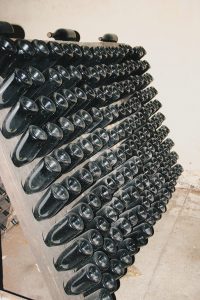
Photo by: Denise M. Gardner
In the Traditional Method, grapes are picked and fermented to dryness in wine tanks, barrels, or large vessels. After blending and stabilization, the wine is then bottled into the heavy Champagne-style bottle with additional yeast and sugar, known as the tirage. This bottle is capped and stored in temperature-controlled rooms to allow for another fermentation to progress. It is during this second fermentation in which the carbon dioxide is developed and captured to create the bubbles you will eventually taste from the bottle.
There are some differences when the Charmat process is used, which is popularized in Prosecco wines. All Prosecco wines are produced via the Charmat process, which contributes to their unique flavor in addition to the wine grape varieties that are used to make Prosecco wine. Similar to the Traditional Method, grapes are picked and fermented to dryness in wine tanks. Again, the wines are then blended and stabilized. However, instead of getting bottled immediately, the second fermentation is inoculated and started in a special wine tank that can withhold higher concentrations of pressure. As the second fermentation is conducted in a tank, there is less flavor influence from the yeast. This creates a fruitier, more floral tasting sparkling wine. Finally, the wine is then bottled into a sparkling wine bottle, but is bottled under pressure in order to retain the carbon dioxide developed during that second fermentation.
Hidden Sparkling Wine Gems
Many of the U.S.’s sparkling wine houses are located in Western wine regions throughout California, Oregon, and Washington. Nonetheless, there are two well-established sparkling houses that are, however, in two rather unexpected states.
The first is Gruet, located in New Mexico. Gruet features a number of non-vintage and vintage sparkling wines made in the Traditional, Méthode Champenoise style. I’ve previously featured some Gruet sparkling wines on my Instagram page, and find them to be a classic representation for high quality sparkling wine, often in the Brut category.
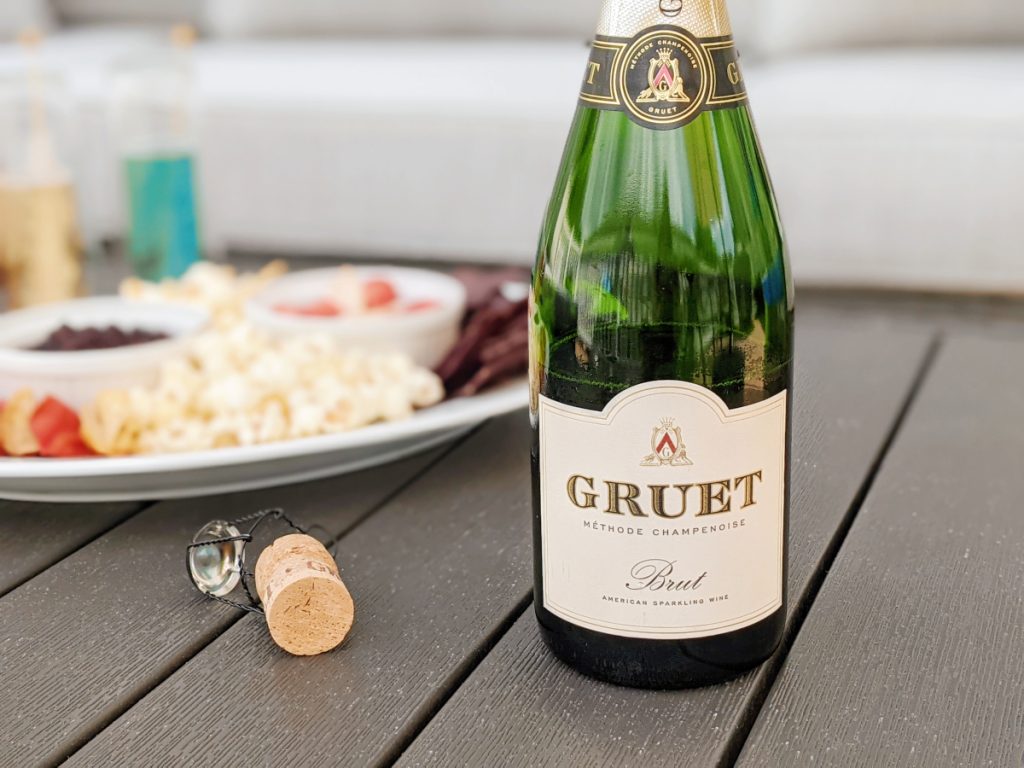
Photo by: Denise M. Gardner
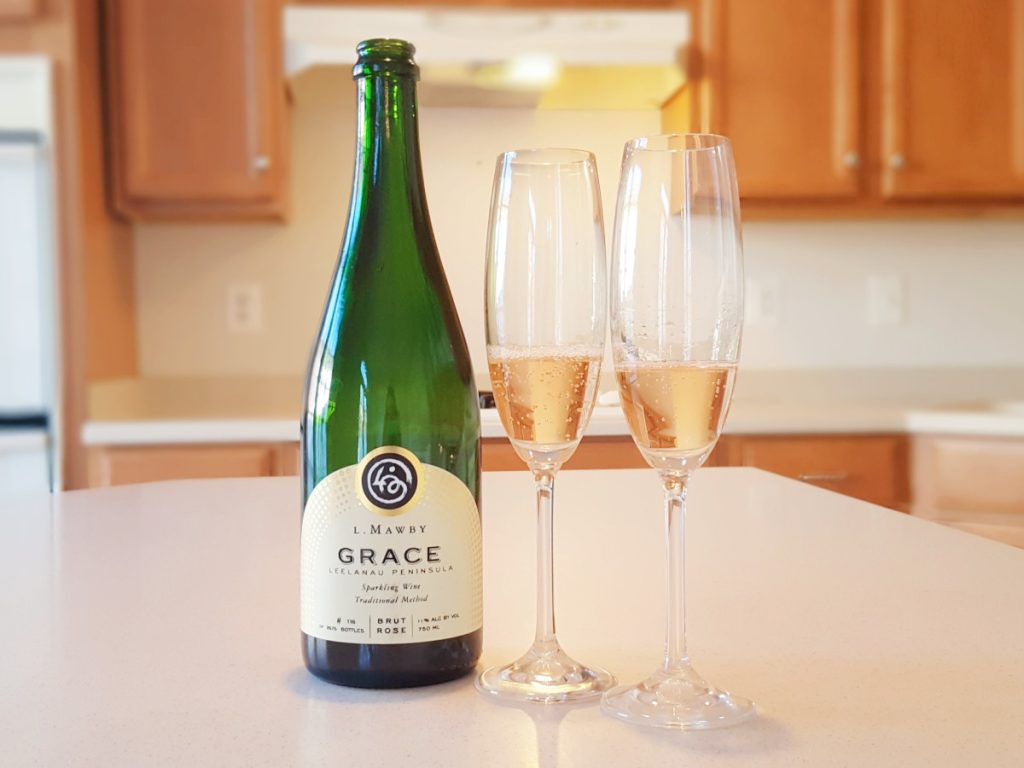
Photo by: Denise M. Gardner
The second is Mawby, located in Michigan. Mawby features sparkling wines produced in both the Traditional, Méthode Champenoise style and using the Charmat (cuve close) process. I’ve also featured Mawby quite a bit on my Instagram page as I was lucky enough to visit the tasting room a few years ago. My favorite of their sparkling wines is Grace, a Brut Rosé made using the Méthode Champenoise process.
If you haven’t ventured outside of the usual sparkling wine labels produced in the U.S., I’d highly recommend exploring these two wine brands! Perhaps you may want to bring one of their bottles, or another label produced in a different state, to the upcoming “Taste Wine with a Pro: Sparkling Wine” tasting event!
Riddled with History
Though we could say all wine is a fingerprint (a “tasteprint”) from the vintage in which the grapes were grown, sparkling wine, specifically, is riddled with history in so many ways. (Use of the word “riddled” was an intentional pun.) 😉
While many may claim the rights to creating sparkling wine, most historical texts admit it was created by mistake: wines that stopped fermenting in the cold winter months would start to re-ferment in the Spring or Summer when temperatures were warmed while the wine was in large barrels or bottles. These early sparkling wines were, for lack of a better word, dangerous, especially when in bottle. Exploding glass bottles were common as these initial bottles that packaged wine were not intended for the high amounts of pressure that developed during fermentation.
After the invention of stronger glass bottles that contained a punt (indent) at the bottom of the bottle, the primary concern with sparkling wine was the cloudiness that plagued these wines (Phillips, 2001). The cloudiness, of course, was caused by the second fermentation that took place in the bottle creating the carbon dioxide. In fact, the woman (yes, woman) that created a process to minimize the cloudiness was Barbe Nicole Ponsardin Clicquot who owned the sparkling house, Veuve Clicquot, after her husband passed away when she was just 27 years of age (Phillips, 2001; Documentary, 2021). Her development of the riddling and disgorgement processes in the 1810’s led the wine world into the style of wine we know as “sparkling wine” today (Phillips, 2001).
The sparkling wine, Champagne (sparkling wine produced in the Champagne region of France), is unique in that it appeals to both elite and common members of society. The initial scarcity of good quality sparkling wines led to the founding elite following. Though not as rare, this long legacy of prestige is echoed today as many privileged members of society use Champagne in their celebrations and events. The Oscars, for example, are often associated with the Champagne Piper Heidsieck (Documentary, 2021), although other brands have been served over the years.
The association with prestige is one of the primary reasons why sparkling wine tends to be affiliated with such privileged members of society today. However, the Champagne houses have successfully reached the masses by advertising the beverage in celebrations and events that required a special wine. Furthermore, Champagne was noted as one of the first wines that was consumed by women. In fact, Champagne was often marketed to women by featuring women on their labels or getting sold directly to elite society women during the second half of the 1800’s (Phillips, 2001). It is often noted that Champagne, at the time, also had a high concentration of women working in production during this time including Barbe Clicquot, Louise Pommery, and Lily Bollinger who all ended up being leaders in the industry (Documentary, 2021).
In more recent history, Champagne, specifically, has a strong association with both World War I and World War II. During World War I, many employees risked their lives picking grapes and making Champagne, as some of the wars’ battles were fought in the Champagne region (Phillips, 2001). World War II offered additional challenges to Champagne including the loss of labor, equipment, and supplies, which affected most of the wine industry (and most industries) internationally (Phillips, 2001; Pinney, 2007B). When France became occupied by the Nazi’s, Champagne (the wine) was actively hidden from the party. It’s somewhat infamous how false walls were built to hide the various tunnels that stored thousands of bottles of Champagne. Furthermore, one of WWII’s most prestigious leaders, Winston Churchill, was famous for his daily devotion to (and consumption of) Champagne, specifically the Pol Roger brand.
In America, during the 1920’s and early 1930’s, the Prohibition era changed national consumption patterns. With the integration of Speakeasy’s, women, minorities, and men all drank alcohol in one room, which was a big social and cultural change from the late 1800’s (Here’s Where it Gets Interesting, 2023). Speakeasy’s also led to the rise of the cocktail culture, as more people became interested in mixing alcohol with juices or syrups. With the rise of cocktails, the use of Champagne in those cocktails became somewhat more popular.
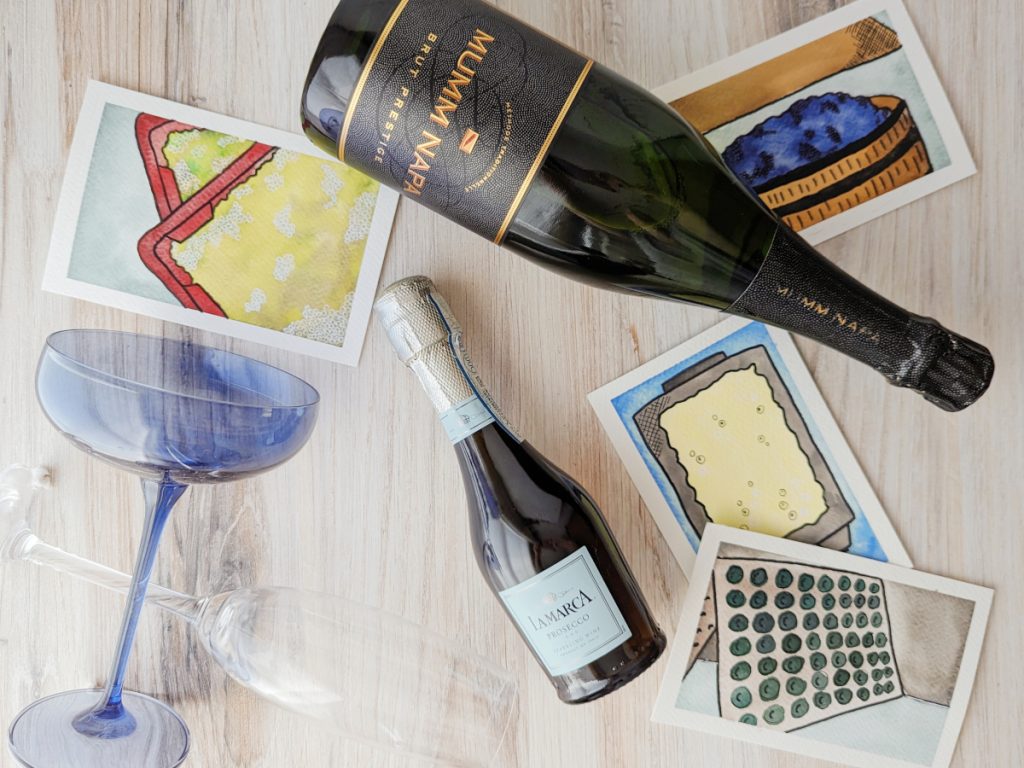
Photo by: Denise M. Gardner
Sparkling Cocktails
With such a rich history in the 19th and 20th should come as no surprise that Champagne is often featured in some of America’s classic cinema during the WWII era. The film, Casablanca (released in 1942), often debated as to whether it depicted America’s neutrality during the first part of WWII or if it was a reflection of America’s neutrality to inspire the American people to align with the Allies, mentions Champagne in two different contexts: both the Veuve Clicquot brand as “a great French wine” and the Champagne Cocktail, ordered by Isla (Ingrid Bergman) during her love affair with Rick (Humphrey Bogart) while they lived in Paris.
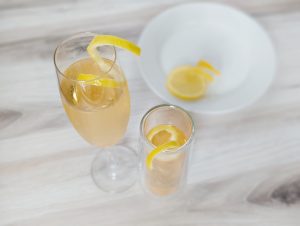
Photo by: Denise M. Gardner
As a fun note for this month’s Sip & Swirl, the title, “Here’s Looking at You, Bubbly” is a spin from Humphrey Bogart’s famous line in Casablanca, “Here’s looking at you, Kid.”
The Champagne Cocktail is a wine cocktail often looked down upon. Originally cast in a light as being “subpar” to the real thing (aka Champagne), it’s difficult to dismiss the feelings many people have to this simple – albeit sophisticated – cocktail. Up until the early 2000’s, this cocktail was featured often in American cinema and television. It is a rather straightforward cocktail to make with a complex flavor due to the integration of Angostura bitters in the drink.
Upon its creation, it is likely that Champagne was used in the actual mixed drink, which may explain some of the disdain for the cocktail. Most serious Champagne consumers would not mix the wine with anything! But, today, the Champagne Cocktail, as well as many other sparkling wine cocktails, is likely mixed with less expensive versions of sparkling wine produced from other winemaking regions. If you are someone that prefers a slightly sweet cocktail with complex flavor, this may be the type of wine cocktail for you.
Sparkling Wine Season is Coming Up!
Sparkling wine is the PERFECT wine style to take to those large holiday gatherings that are right around the corner: the Thanksgiving meal, for Chanukah dinner, Christmas celebrations (whether we’re talking about mimosas or dinner), and, of course, New Year’s Eve celebrations.
New Year’s Eve is when America tends to run to the nearest wine shop to get some bottles of sparkling wine! It has been a documented American tradition for many decades to use Champagne or sparkling wine to ring in the New Year.
Do you know what you’re going to buy?
Are you going to rely on your “Old Faithful” sparkling purchase? Or are you ready to try something new?
If you are ready to browse through some options of sparkling wine that may be new to you, I’m your woman to lead you in a direction of finding something that you will enjoy for your upcoming occasion! Here’s how…
Isn’t Sparkling Wine Fascinating?
With a wine filled with so much history and tradition, including the methods in which it is made, I’m going to explore this wine style in my upcoming “Taste Wine with a Pro” tasting event.
Bring your favorite (or my favorite) sparkling wine to the tasting as deep dive into this wine style, explore what all of us are drinking, sparkling wine glasses, and reviewing sparkling wine cocktails.
Have you had a French 75? Or a Champagne Cocktail? Or, even, Champagne?!
Now is the time to try sparkling wine and talk about it alongside Denise. Gain confidence in selecting your next bottle of bubbly! On November 9th, we’re hosting our first “Wine Tasting with a Pro” virtual event in which we taste, share, and discuss sparkling wine! There is SO much to talk about, learn, and sip with this style of wine!
If you’re worried about opening a bottle of bubbly for this event, have no fear! I recently showed you how to get a bottle of sparkling wine open safely and easily in this video.
Won’t you join us?
When: November 9, 2023 at 6:30 PM (EST)
Where: It’s virtual! You can join us from the comfort of your home.
What to Bring: A sparkling wine of your choosing.
Cost: $37
Register here: https://www.dgwinemaking.com/winelovers/taste-wines-with-a-pro/
What do you get from these classes?
- A professional concierge service to navigate a wine purchase in your wine retail store
- Educational conversation regarding the event’s wine theme (aka sparkling wine!)
- Non-pretentious wine discussion on wines brought to the tasting group
- Encouragement to explore new wines you never tried before
- Increased confidence in trying and discussing wines
- An opportunity to ask Denise all of your wine related questions!
Because I want to learn more…
This post mentioned the following resource(s):
A Short History of Wine by Rod Phillips. 2001.
A History of Wine in America, Vol. 1: From the Beginnings to Prohibition by Thomas Pinney. 2007A.
A History of Wine in America, Vol. 2: From Prohibition to Present by Thomas Pinney. 2007B.
“From Hatchets to Hoods: Mayhem in a Dry America – A Cocktail Toast to the Mob.” The May 15, 2023 Episode of “Here’s Where it Gets Interesting” Podcast by Sharon McMahon.
“Sparkling: The Story of Champagne.” 2021. Documentary.
